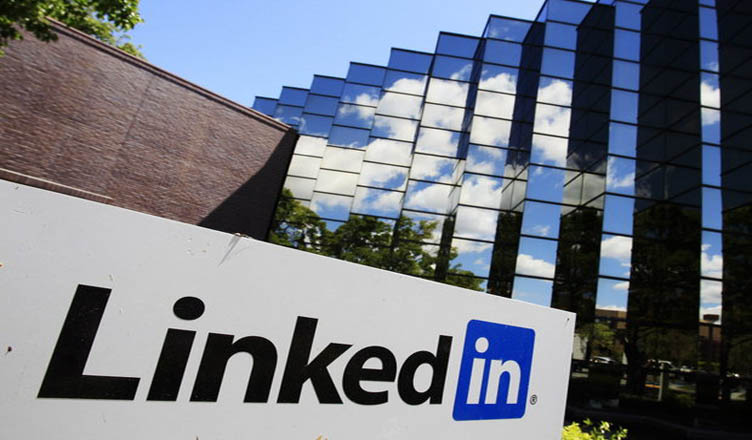In the digital age, your online reputation is crucial. It can make or break your personal image or business brand. Harmful content on the web can have a damaging impact. It can tarnish your reputation, deter potential customers, and even lead to financial loss. But what if you could remove this harmful content? This guide will provide you with proven tactics to remove negative content from web pages and Google search results. It’s designed to help you regain control of your online image.
We’ll explore various strategies, from direct removal requests to legal avenues. We’ll also delve into the role of SEO in suppressing negative content.
Whether you’re a business owner, a brand manager, or an individual looking to clean up your online presence, this guide is for you.
Remember, managing your online reputation is not a one-time task. It requires continuous effort and vigilance.
So, let’s dive in and learn how to remove negative content from the web effectively.
Understanding Negative Content and Its Impact
Negative content can take many forms online. It might be a bad review, a critical article, or defamatory statements on social media. Each type can affect perceptions of your brand or personal image.
The impact of negative content is profound. It can lead to a loss of customer trust and revenue. For individuals, it might damage personal relationships or job prospects.
To address negative content, you first need to understand its nature. Here are common types:
- Defamatory Posts: Statements that harm someone’s reputation.
- Negative Reviews: Criticisms that influence consumer decisions.
- Unwanted Search Results: Irrelevant or outdated information about you or your business.
Often, negative content spreads quickly. This can exacerbate its impact. It’s crucial to act swiftly to mitigate potential damage.
Furthermore, the internet’s permanency means even old negative content can resurface. Ensuring ongoing management is vital.
Bear in mind, addressing negative content isn’t only about removal. It’s also about improving and maintaining positive online visibility.
Identifying Sources of Negative Content
Identifying where negative content originates from is the first step. It could come from reviews on platforms like Google or Yelp. Social media platforms are another source where negative posts or comments may appear.
Conduct a thorough search using your or your business’s name. Focus particularly on the first few pages of search results. Negative content often hides there.
Tools such as Google Alerts can notify you of new content. Set alerts for your name or your business to stay informed and react quickly when needed.
The Legal Landscape of Content Removal
Legal options exist when facing persistent negative content. However, these are not always straightforward. Understanding the legal avenues can help determine the best course of action.
Laws vary by region, so it’s vital to know the specific regulations relevant to your situation. Common legal tools include:
- Defamation Laws: Protect against false statements harming reputation.
- The Right to Be Forgotten: Applies in some jurisdictions for outdated or irrelevant data.
- DMCA Takedown Notices: For removal of content infringing copyrights.
Taking legal action can sometimes escalate situations, leading to more visibility. This is known as the Streisand effect. Hence, weigh the pros and cons before proceeding.
Before opting for legal routes, consult with a legal professional. They can offer guidance and evaluate the viability of a case.
Direct Removal Requests: Contacting Website Owners and Authors
Direct communication is often a simple and effective method to address negative content. Start by reaching out to the website owner or content creator. Many times, a polite request can lead to the content being altered or removed.
Before contacting them, research who owns the site. Use tools like WHOIS to identify website ownership information. Ensure you have the correct contact details, possibly an email or a contact form on their website.
When making contact, keep your message professional. Explain clearly why the content is inaccurate or problematic. Be specific about what you’d like them to do—whether it’s removing, editing, or adding a clarification to the content.
Be patient but prompt. Website owners and authors often have busy schedules. A follow-up message might be necessary if you don’t receive a response within a reasonable timeframe. However, avoid excessive contact to prevent souring the relationship.
Sometimes, sites may require evidence or additional context to consider your request. Be prepared to provide any supportive documentation swiftly. Your willingness to cooperate can increase your chances of success.
Crafting Effective Removal Requests
Crafting a removal request requires precision and politeness. Start by clearly identifying the specific content you want addressed. Include URLs and a brief description.
Next, explain the reasons for removal. Highlight any inaccuracies or outdated information. Be factual, avoiding emotional language, which might dilute your credibility.
End your message with a clear, polite request for removal or amendment. Thank them for considering your request, and ensure your contact details are included. This can facilitate a smoother communication flow and improve response rates.
When Removal Requests Fail: Next Steps
Sometimes, direct requests do not yield the desired outcome. In such cases, explore alternative strategies. Consider engaging a professional reputation management service. These services specialize in handling stubborn negative content.
Another option is to escalate the issue legally, if appropriate. Legal measures should be a last resort, pursued only after careful consideration and legal advice. They can be costly and time-consuming.
Finally, consider mitigating the impact of the negative content through SEO strategies. Suppress the visibility of negative results by boosting positive content. This involves creating new, favorable content to outrank unwanted information in search results.
Leveraging Legal Tools: DMCA and Defamation Laws
Legal tools can be potent allies when battling negative content. Two primary avenues include the DMCA and defamation laws. These tools are often effective when direct requests have failed.
The Digital Millennium Copyright Act (DMCA) provides a framework for addressing unauthorized use of copyrighted material. If negative content includes images, text, or videos you own, the DMCA can facilitate removal. This approach is applicable primarily to copyright infringements.
Defamation laws offer another legal route. They pertain to false statements causing harm to your reputation. If the negative content is defamatory, legal action may compel removal or result in compensation. Consulting with a legal professional can clarify your position under these laws.
Additional legal considerations include:
- Privacy laws for unauthorized personal data.
- Trademark infringement, if applicable.
- Online harassment and cyberbullying statutes.
Engaging legal tools is often a complex and lengthy process. However, understanding your rights is crucial for an effective strategy.
Filing a DMCA Takedown Notice
Filing a DMCA takedown notice involves several steps. Begin by confirming you own the copyrighted material. Ensure the content in question is indeed infringing upon your rights.
Draft your notice with care. Clearly identify the infringing content, providing specific URLs. Include a statement asserting your belief of the infringement. A signature, either physical or electronic, is also required.
Submit the notice to the website host or platform facilitating the content. Many sites have specific forms or email addresses dedicated to DMCA requests. Follow their guidance meticulously for best results.
Success is not guaranteed, but DMCA notices can be efficient. If a notice is rejected, consider reevaluating your claim or seeking legal assistance. An attorney with expertise in intellectual property might offer further insight or alternative solutions.
The Right to Be Forgotten and Other Legal Avenues
The “Right to be Forgotten” offers a legal path for erasing certain personal data from search engines. Originating in the EU, this right allows individuals to request removal of outdated or irrelevant information.
Filing a request under this right involves proving the information is no longer valid or necessary. It requires clear documentation and a logical rationale. Google and other search engines have forms specifically for these requests.
In addition to the right to be forgotten, other legal avenues include privacy regulations. These may address unauthorized use of personal information or image likeness. Consulting privacy laws can unveil viable options for removal.
Lastly, if content meets criteria for harassment or bullying, legal recourse might be possible. Explore local and international laws for further actions. Approach these measures with caution, and weigh potential implications on your public image.
Using Google’s Tools to Remove or Suppress Negative Content
Google offers several tools to help individuals and businesses manage their online reputation. One of the primary features is the content removal request form. This tool is designed for circumstances where content violates Google’s policies, such as privacy concerns or copyright infringements.
It’s crucial to note that Google primarily addresses issues involving legal violations. Thus, simply disliking content won’t suffice. Be prepared to demonstrate clear reasons for your request.
In certain instances, Google can suppress content visibility rather than outright removal. This involves adjusting how certain links appear in search results, pushing them lower down.
Google’s tools also include settings for managing personally identifying information, which might breach privacy standards. Utilizing these options ensures that sensitive data doesn’t linger online unnecessarily.
Consider these additional Google tools and strategies:
- SafeSearch Settings: Helps filter explicit material, which can aid in managing content visibility.
- Google Alerts: Notifies you when specific keywords are mentioned online.
- Google Disavow Links Tool: Useful for SEO professionals to manage link profiles.
While Google provides a solid foundation, remember that these tools are part of a broader strategy. Incorporating them with other measures enhances overall efficacy.
Google’s Content Removal Request Form
The Google Content Removal Request Form is pivotal in addressing inappropriate content. This form lets you specify the nature of the removal request, such as privacy violations or defamation.
Before submitting, gather all necessary information. This includes URLs, details of infringement, and any evidence supporting your claim. Clearly articulate the harm caused, as this strengthens your request’s validity.
Navigating the form requires attention to detail. Incorrect submissions can lead to delays or outright rejection. Therefore, carefully review all entries before submission.
While the form is accessible, approvals are not guaranteed. Google evaluates each request against stringent criteria. However, presenting a comprehensive and well-documented request heightens the likelihood of success.
SEO Strategies to Suppress Negative Content
Search Engine Optimization (SEO) is a powerful tool for content suppression. Improving the ranking of positive content can push negative pages further down in search results. This diminishes their visibility and impact.
Begin by identifying keywords associated with your positive content. These should align with what people might search related to you or your business.
Content creation is key. Develop high-quality blogs, articles, and multimedia content that reflect positively on your brand. Consistent posting enhances authority and search rankings.
Consider implementing the following SEO strategies:
- Optimize Metadata: Ensure all titles, descriptions, and tags are accurately reflective of positive themes.
- Backlinking: Secure links from reputable sites to your positive content, boosting its authority.
- Local SEO: Enhance visibility in geographical searches to build a strong local reputation.
These efforts, coupled with regular updates and engagement, progressively suppress negative content. Maintaining this strategy requires ongoing commitment and adaptation to search engine algorithm changes.
Creating and Promoting Positive Content
Creating positive content is an essential strategy for managing online reputation. This involves not just crafting but actively promoting content that highlights your strengths and achievements. Positive content effectively suppresses negative mentions by populating the internet with favorable narratives.
Start by understanding your audience. Identify what resonates with them. This insight directs the type of content you should produce. It could be blogs, videos, podcasts, or infographics that tell your story compellingly.
Your content should not only be positive but also informative. Providing value encourages your audience to engage and share your message. This organic sharing can exponentially increase your content’s reach.
Build a comprehensive promotional strategy. Leverage different platforms and channels suited to your content type. Cross-promotion across social media, email newsletters, and affiliate networks can maximize exposure.
Consider the following strategies for content creation and promotion:
- Consistent Blogging: Regular posts keep your audience engaged and informed.
- Press Releases: Announce major achievements to garner media attention.
- Collaborations: Partner with influencers to amplify your message.
- Content Curation: Share relevant articles and news to position yourself as a thought leader.
The key is persistence and adaptability. Continuously refine your approach based on feedback and trends. This ensures your positive content remains relevant and effective in overshadowing negative narratives.
The Role of Social Media and Online Profiles
Social media platforms are vital for shaping online reputation. They offer a direct communication channel to your audience. It’s crucial to maintain an active and positive presence on these platforms.
First, audit your current social media profiles. Ensure they reflect your brand or personal identity accurately. Use high-quality images and complete your bios and descriptions to present a professional facade.
Regularly post engaging content that aligns with your brand values. Interaction is essential; respond to comments and messages to build a community around your profile.
Social media also helps monitor public perception. Use tools to track mentions and gather insights into sentiment trends. This allows prompt response to emerging issues.
Effective social media use provides several benefits, such as increasing visibility and credibility. It also helps direct conversations, ensuring your narrative stays positive and aligned with your goals.
Engaging with Professional Reputation Management Services
Sometimes, dealing with negative content requires expert intervention. Professional reputation management services offer specialized knowledge and tools. These experts understand the intricacies of search engines and content strategies, which is crucial for effective suppression.
Hiring a service begins with selecting a reputable company. Look for credentials and testimonials that demonstrate their success and reliability. A detailed service scope and transparent pricing are also indicators of quality.
These services typically offer comprehensive strategies. They assess your online presence and devise a tailored plan to counteract negative content. Their methods include SEO enhancements, content promotion, and legal avenues.
While these services are effective, understand they come with a cost. Evaluate the potential return on investment before committing. In many scenarios, their expertise justifies the expense, especially for businesses where reputation significantly impacts revenue and growth.
The role of these professionals is invaluable, especially for complex cases. They can provide the peace of mind that comes with knowing experts are enhancing and safeguarding your online reputation.
Monitoring and Maintaining Your Online Reputation
Maintaining a positive online reputation requires continuous effort. Regular monitoring is critical to catch any negative content early. With the digital world constantly evolving, staying vigilant helps protect your online image.
Utilize online tools for monitoring purposes. These can include Google Alerts and specialized social media tracking applications. These tools notify you when your name or brand is mentioned, allowing you to respond swiftly.
Effective reputation management is not just reactive but also proactive. Regularly updating your knowledge about new trends and strategies can help you stay ahead. Having a crisis management plan in place is also beneficial.
Consider these monitoring strategies:
- Set Up Alerts: Use Google Alerts for your name and brand.
- Engage Regularly: Interact on social media to maintain visibility.
- Audit Your Presence: Regular checks on search results and profiles.
- Feedback Loop: Encourage and address feedback from customers or clients.
An ongoing commitment to these practices will keep your reputation strong, minimizing potential damage from negative content.
Regular Monitoring and Quick Response Strategies
Monitoring shouldn’t be passive. Regular checks ensure you’re aware of how you’re perceived online. A prompt response can often nip potential issues in the bud.
Start by setting specific times for monitoring. Daily checks are ideal for high-profile individuals or brands. This routine helps in forming a habit and prevents scenarios from spiraling out of control.
In case of negative content emerging, respond quickly but thoughtfully. Deliberate on the best approach—whether it’s issuing a public statement, contacting the publisher, or seeking removal. Balance speed with strategic thinking.
Engage your audience constructively in response to negative feedback. Demonstrating openness can transform criticism into a learning opportunity, often improving perceptions in the long run.
The Importance of Ethical Practices in Reputation Management
Ethical practices are the cornerstone of lasting reputation management. While quick fixes might seem tempting, they often lead to more significant problems and trust issues in the long term.
Honesty is crucial when addressing negative content. If there’s an ounce of truth, acknowledge it publicly and work towards rectification. Transparency can turn a potential crisis into an opportunity for growth and improved public perception.
Avoid black-hat SEO or other manipulative tactics. These methods can lead to search engine penalties and damage reputation severely when discovered. The risk often outweighs any temporary gains.
Adopting ethical standards fosters trust with your audience. It ensures that even as strategies evolve, the foundation of integrity and credibility remains unshaken. In the complex landscape of digital reputation, ethics should not just be a practice; they should be the guiding principle.
Conclusion: The Long-Term Approach to Online Reputation Management
Managing your online reputation is a marathon, not a sprint. Consistent effort and proactive strategies will help maintain a positive image over time. It’s essential to view reputation management as an ongoing commitment, integrating it into your daily activities.
Being adaptable to changes in the digital landscape is vital. As trends shift and new platforms emerge, updating your tactics ensures continued effectiveness. A keen understanding of these dynamics can safeguard against potential threats to your reputation.
Ultimately, fostering trust through transparency and honesty solidifies your brand’s credibility. By embracing ethical practices and engaging genuinely with your audience, you create a resilient reputation that withstands challenges. This dedication to integrity will serve as your strongest defense in the digital age.
Ready to take charge of your online reputation? Start implementing these strategies today and watch your online image flourish. Stay informed, proactive, and committed to maintaining a positive presence. Your brand’s future starts now.
Wildnet Technologies is a leading Digital Marketing Company that provides Content marketing services and has had the pleasure of nurturing 4100+ clients and generating more than USD 150 million in revenue over our 17-year-long journey.
Read more
- SEO Poisoning: What It Is and Its Most Common Goals
- How to Reduce Spam Score Complete Guide
- What are Backlinks, and Why are They Important for SEO?
- What is link building in SEO | The Ultimate 2024 Guide
- What Is Orm In Digital Marketing?
Frequently Asked Questions
Q. What are the best methods for removing harmful content from a webpage?
Ans. You could contact the webmaster and ask for it to be removed. If necessary, take legal action. You can promote content that improves a person’s image, which will lower the bad ones.
Q. Is it possible to completely eliminate harmful content on Google’s search engine?
Ans. Content that is in breach of the policies can be removed. Otherwise, the more effective method is improving the SEO for approving content.
Q. How can a person try to have lousy content removed?
Ans. The most direct way will be contacting the webmaster. Another is using Google’s content removal tools for anything outdated or detrimental.
Q. Is suppressing the harmful content legal?
Ans. It is legal to use SEO techniques to try and highlight the content in a more positive light, which is a legitimate manner of improving one’s reputation.
Q. How much time will it take to get harmful content removed or suppressed?
Ans. Removing the content can take days, while pushing the content lower through SEO can take weeks to months.







